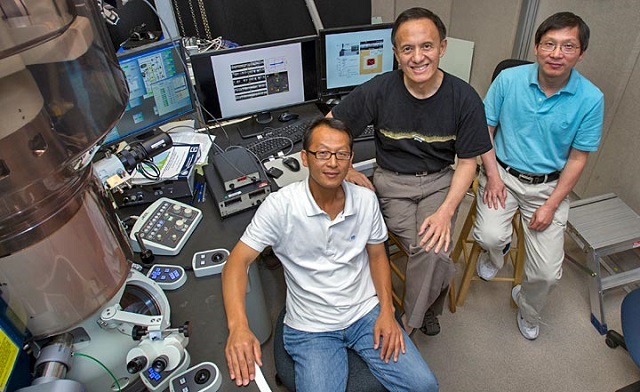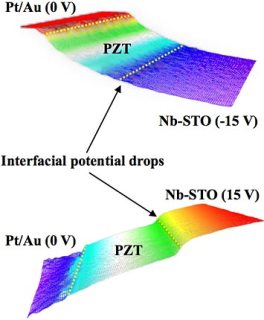
Scientists and study coauthors from Brookhaven Lab's Condensed Matter Physics and Materials Science Department stand beside a TEM capable of capturing nanoscale structures.
From left: Myung-Geun Han, Yimei Zhu, and Lijun Wu.
Researchers at the Brookhaven National Laboratory of the U.S. Department of Energy have identified charge preferences and nanoscale asymmetries of the ferroelectric materials that may account for their operational limits.

They employed advanced methods to demonstrate novel distribution of electric field in ferroelectric thin films. These results could revolutionize ferroelectric technology. These advanced techniques include electron holography, real-time electrical biasing and current measurements induced by an electronic beam.
For the experiment, the team set out to map the internal electric fields of the materials under exact operating conditions. These materials were extraordinarily thin than a human hair. The scientists inspected the ferroelectric films of titanium oxide, zirconium, and lead grown on conductive substrates of titanium oxide and strontium, with a little amount of niobium.
They then tracked the supposed interface quirks by means of electron holography and ultimately identified the charge preferences hidden within the ferroelectric film by monitoring the way the beam bent across the film. These opposing polarizations questioned existing assumptions regarding the ferroelectric behavior.
Measurements of the current induced by the electron beam further confirmed the nanoscale asymmetries in these ferroelectrics. Technique such as piezoresponse force microscopy was also used to validate the strange domain structures.
To explore the interface of the material, the team used electron energy loss spectroscopy and determined the chemical composition of the material by quantifying the energy rendered by the electron beam in particular locations.
The electron-swapping oxygen deficiency that occurs in ferroelectric materials can negatively impact data storage, but this can be rectified by integrating a "sacrificial layer" between the substrate and the ferroelectric to prevent interface interactions. The research could help develop innovative ferroelectrics that manipulate this charge phenomenon.